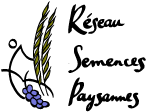Niveau juridique : Union européenne
Le 7 décembre a eu lieu à la commission agriculture du parlement européen une présentation sur la diversité génétique, la conservation et les espèces sauvages apparentées aux plantes cultivées.
Il a été souligné que ces dernières peuvent être croisées avec des variétés existantes, pour en créer de nouvelles, plus résistantes au changement climatique. L’importance de la conservation in situ de ces espèces a été soulignée.
On notera tout particulièrement la présentation « Conservation and use of
Agrobiodiversity for better food systems: The banana case study ». (présentation - en anglais- ici)
Communiqué (les passages en gras sont soulignés par nos soins) :
« The committee meeting on 7 December consisted of the hearing on genetic diversity, conservation and crops wild relatives. Crop wild relatives are closely related to our cultivated crops, but grow naturally under a wide range of environmental conditions. They can be crossed with existing crops to produce varieties that are more adaptable to local climates. Furthermore they can be used to develop crop varieties with greater resilience to climate change.
Not only is it important to conserve these species in secure gene banks, it is also important to conserve them in their natural habitats so that they continue to adapt and change. The ‘European Biodiversity Strategy’ (COM (2011) 244 final) aims to help stopping global biodiversity loss and also reflects EU commitments in the ‘International Convention on Biological Diversity’. The purpose of this hearing was to up-date AGRI Committee members on the state-of-play in research and allow for a debate on crop wild relatives, preserving the genetic banks and the role of genetic diversity notably in relation to food security. »
Lien vers la page de l’évènement ici
